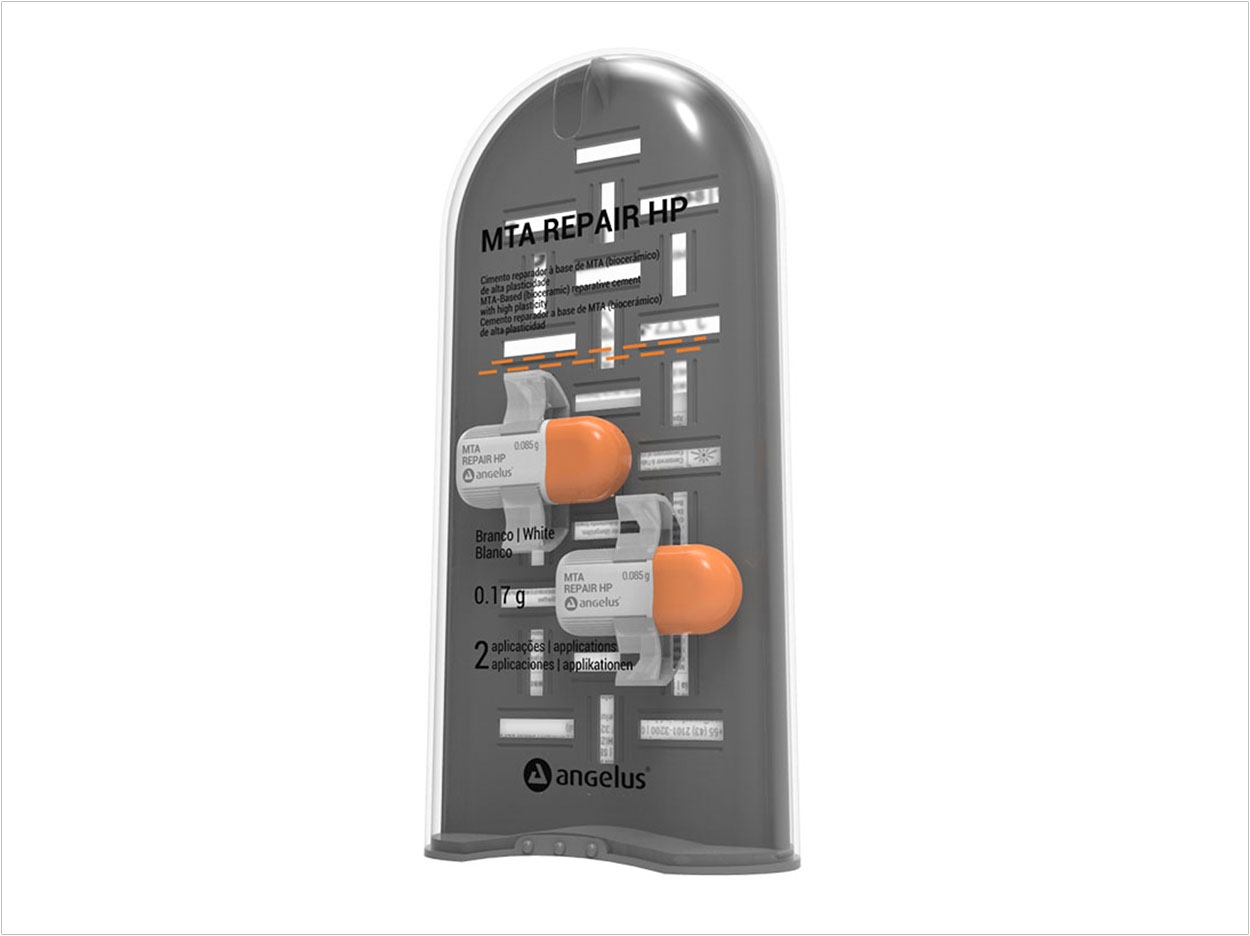
Using a new formula, Angelus designed its MTA Repair HP reparative cement for easier manipulation and insertion into the dental cavity after hydration. While the new formula maintains and all the chemical and biological properties of the original mineral trioxide aggregate (MTA), Angelus states, it changes the physical properties of manipulation.
As a result, the MTA Repair HP cement exhibits greater plasticity, which facilitates handling and insertion. It also induces the healing of periapical lesions. Plus, it stimulates the formation of cementum, bone, and, indirectly, periodontal ligament.
The bioceramic cement is composed of mineral oxides in the form of fine hydrophilic particles. These include a high concentration of free calcium oxide, which reacts with water to form calcium hydroxide. When it comes in contact with fluids from the surrounding tissue, calcium hydroxide is dissociated into calcium and hydroxyl ions that have a positive effect on oral tissues and microorganisms, according to Angelus.
As hydroxyl ions accumulate, the site becomes highly alkaline and inhospitable to bacterial proliferation. The high pH damages bacterial membranes and DNA, denaturing its protein content. The elevated pH also activates alkaline phosphatase, an enzyme that stimulates the release of inorganic phosphates from phosphate esters. Free organic phosphate ions react with the calcium ions to form calcium phosphate, the main component of hydroxyapatite.
Furthermore, calcium hydroxide may influence areas of resporption to prevent osteoclastic activity and stimulate the repair process. Calcium ions also are important in the activation of calcium-dependent adenosine triphosphate, migration, and cellular differentiation, and they react with carbon dioxide from tissue to form calcium carbonite crystals, which serve as nuclei for calcification.
Finally, calcium ions react with carbon dioxide that’s present in the tissue to form granules of calcite. Fibronectins cluster in the vicinity of these granules. Then, with cellular differentiation and layers of cementum and bone, the periapical lesion is repaired.
Additional features include radiopaque calcium tungstate, which prevents root and crown staining. With its initial setting time of 15 minutes, treatment can be completed in a single session. Its low solubility means more prolonged action and quicker tissue healing. Its high marginal sealing capability prevents the migration of microorganisms and fluids into the root canal.
When used on pulp exposures, MTA Repair HP induces the formation of a dentin barrier, according to Angelus. Its hydrophilic nature enables its use in humid conditions without changing its properties as well. Indications include:
- Treatment of iatrogenic or decay-related perforation (root and furcation);
- Treatment of root perforation associated with internal resorption;
- Surgical treatment of root perforation;
- Parendodontic surgery with retrofilling (apicoectomy);
- Direct pulp capping;
- Pulpotomy;
- Apexigenesis;
- Apexification.
Related Articles
Endodontic Reparative Cement With Mineral Trioxide Aggregate
MTA Proves Effective in Direct Pulp Capping
A Short Case Study: Relax, Don’t Extract!


